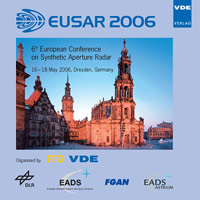Comparison of Methods for Classification of Land Cover Using Polarimetric SAR Data
Konferenz: EUSAR 2006 - 6th European Conference on Synthetic Aperture Radar
16.05.2006 - 18.05.2006 in Dresden, Germany
Tagungsband: EUSAR 2006
Seiten: 4Sprache: EnglischTyp: PDF
Persönliche VDE-Mitglieder erhalten auf diesen Artikel 10% Rabatt
Autoren:
Krogager, Ernst; Staykova, Doroteya K.; Alberga, Vito (Danish Defence Research Establishment, Denmark)
Danklmayer, Andreas (German Aerospace Centre (DLR), Germany)
Chandra, Madhu (Chemnitz University of Technology, Germany)
Inhalt:
Polarimetric SAR data are coherent by nature of the principle of operation. However, most often incoherent approaches are chosen for the post-processing in order to apply conventional averaging and statistical methods. For this purpose, covariance and coherency matrices are typically formed from the complex raw data, and a variety of incoherent analysis and decomposition methods have been proposed for the further information extraction. Alternatively, the complex data may be used on a pixel by pixel basis to extract information at the highest possible resolution. By the latter approach, absolute phases have to be taken into account, and straightforward averaging of the coherent quantities cannot be applied. However, it is still possible to perform averaging of individually extracted real parameters, and as we shall show, the coherent data can indeed be averaged after proper phase normalization. In this work, we have considered both coherent and incoherent approaches for the purpose of quantitatively comparing the utility of the various approaches. The analysis procedure is based on a series of classification tests on many different polarimetric parameters derived after applying the different theoretical methods. Several classification methods have been applied, and hence, the work comprises a comparison of the classification potential of different polarimetric descriptors as well as a comparison of the performance of different classifiers for the type of data under investigation. Data from the Danish EMISAR have been used.


